3 Easy DIY Mosquito Traps for a Bite-Free Home
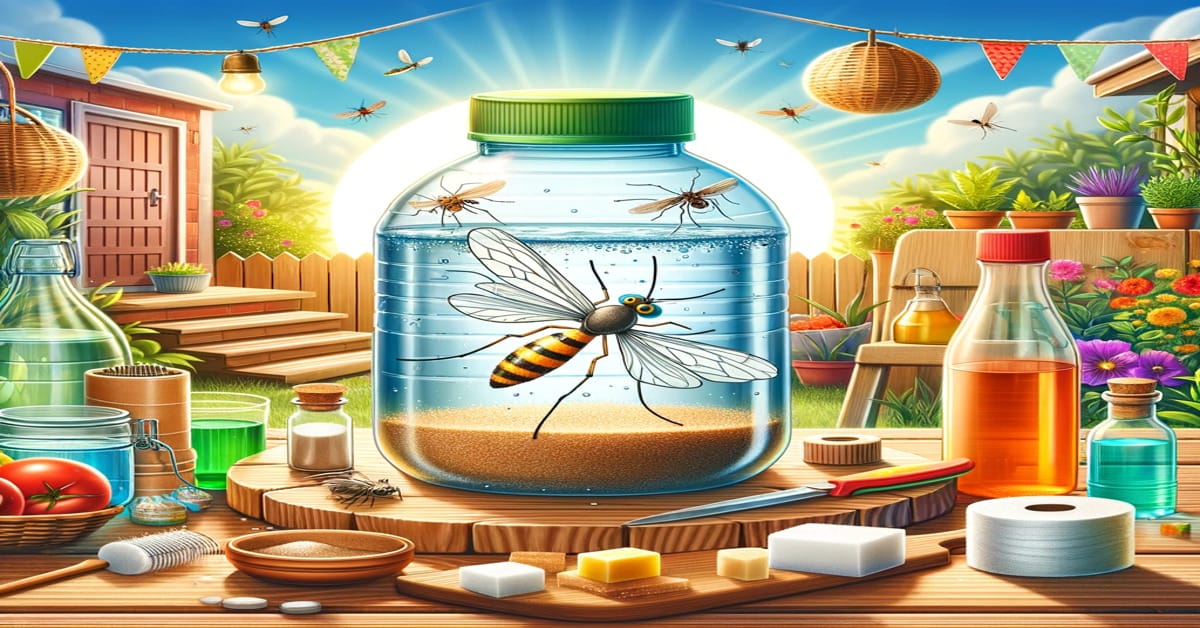
As the weather warms up, mosquitoes come out to play, turning what should be delightful summer evenings into itchy nightmares.
While store-bought traps can be pricey and potentially harmful to the environment, there’s a solution that’s both effective and easy on the wallet – DIY mosquito traps. Here are the methods that I’ll cover:
🍯 Method 1: Brown Sugar & Yeast Bottle Trap
💡 Method 2: Dish Soap and Light Trap
🌋 Method 3: Vinegar and Baking Soda Trap
I’ll guide you through these homemade traps to help you reclaim your outdoor spaces from these pesky insects. Understanding how these traps work is key to their success.
How Do DIY Mosquito Traps Work?
Have you ever wondered how these DIY mosquito traps work? They’re simple yet incredibly effective; I’ve tried my fair share of pest control methods.
It turns out that mosquitoes are attracted to carbon dioxide, the things humans and animals exhale. That’s where the yeast in these DIY traps plays a vital role.
Method 1: Brown Sugar & Yeast Bottle Trap
Talk about simplicity. If you’d like an easy DIY mosquito trap, it’s your lucky day. Being both cost-effective and environmentally friendly, this trap is all about exploiting mosquitoes’ attraction to carbon dioxide, which, interestingly, is produced from the breakdown of sugar by yeast.
Constructed from a 2-liter plastic bottle and just a handful of kitchen ingredients, it may surprise you how proficient this contraption can be at cutting down on your mosquito problem. Here’s how you can get started.
Ingredients:
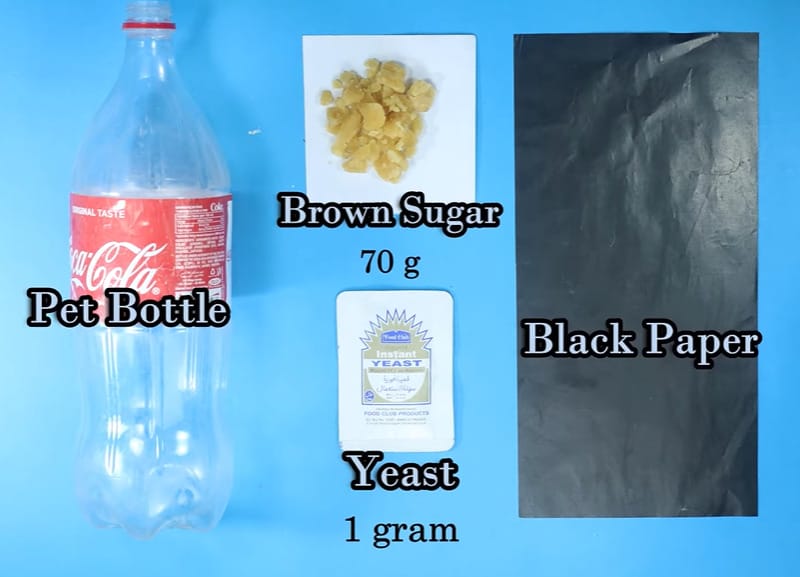
- Empty 2-liter plastic bottle
- Half a cup of brown sugar
- Quarter Tsp yeast
- Cup of hot water
- Black paper
Making the Trap:
Step 1: Cut the 2-liter plastic bottle in half and invert the top half to create a funnel-like shape.

Step 2: Mix brown sugar with hot water. Cool it down before moving to the next step.

Step 3: Pour the cooled mixture into the bottom half of the bottle.
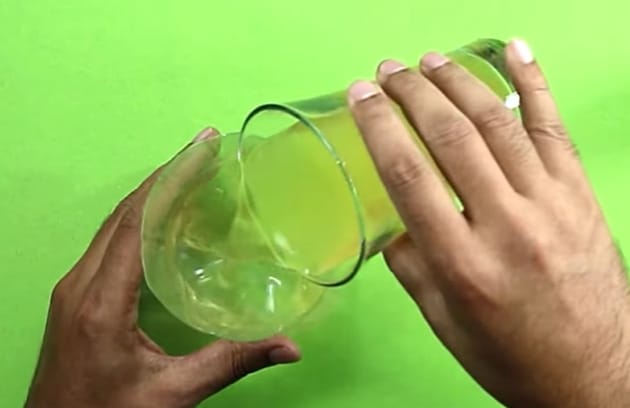
Step 4: Add a tich over 1/4 tsp yeast. No need to mix it with the sugar water. It will begin creating carbon dioxide on its own.
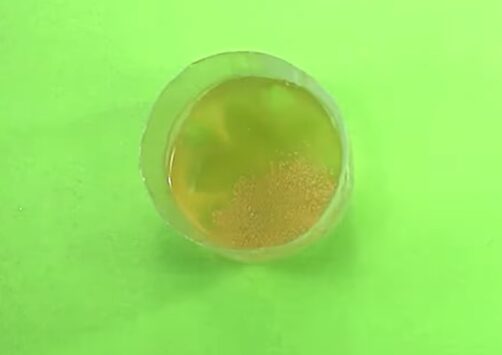
Step 5: Place the inverted top half into the bottom, forming a seal. You can secure it further with tape and black paper around the edges, allowing no room for escape.

Once assembled, your simple homemade mosquito trap is ready. For optimum effectiveness, hang it in an elevated area where mosquitoes frequently emerge.
Method 2: Dish Soap and Light Trap
Taking advantage of pesky mosquitoes’ affinity for light and moisture, we can make an easy DIY trap using dish soap and light.
Ingredients:
- Small container
- Soap
- A cup of water
- Light source
Making the Trap:
Step 1: Add four drops of dish soap to a cup of hot water. Ensure the soap coats the water’s surface, but avoid making too many bubbles. You can use any liquid washing detergent or dish soap in this trap.
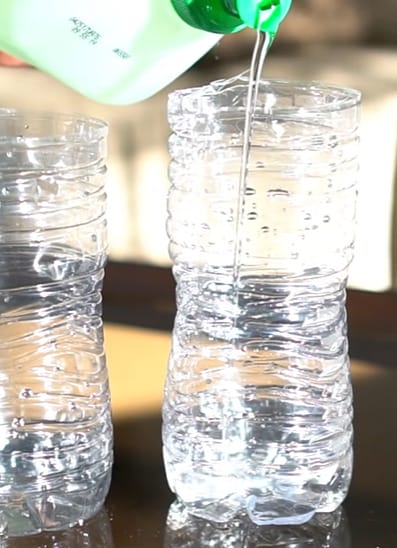
Step 2: Set up your trap next to a light source – this could be a mosquito-zapper light, a small lamp, or, if outdoors, a solar light.

Avoid using electricity near the trap, as it could be dangerous. The light will attract the mosquitos towards your trap.
Method 3: Vinegar and Baking Soda Trap
Sometimes, you don’t need to look further than your pantry to find an effective solution to your mosquito problems. Imagine using common household items like vinegar and baking soda to create an inexpensive yet highly effective mosquito trap.
Ingredients:
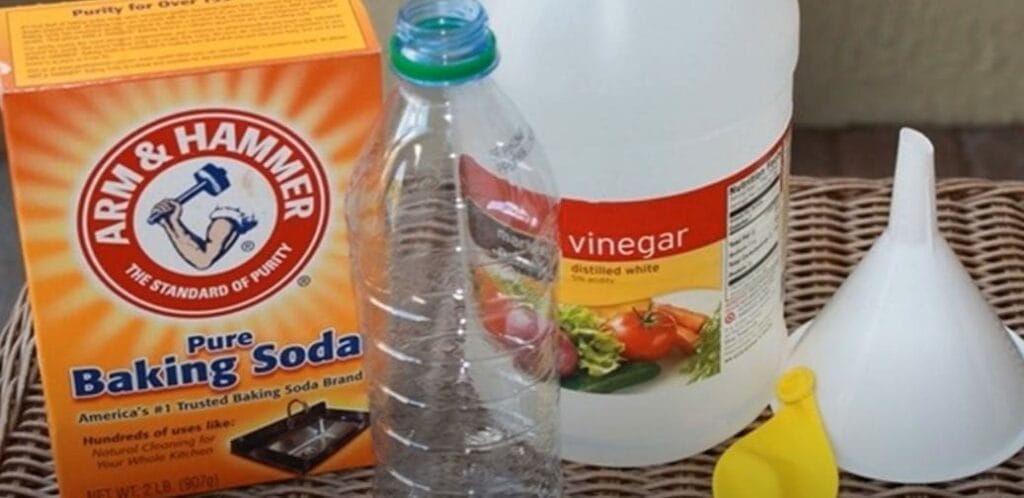
- Plastic Bottle
- Baking Soda
- Vinegar
Making the Trap:
Step 1: Just cut the top off a plastic bottle and flip it upside down, creating a funnel. Seal it in with a tape.
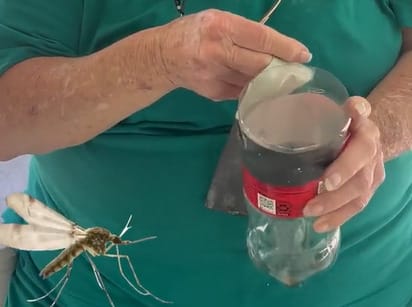
Step 2: Toss in some baking soda at the bottle’s bottom.
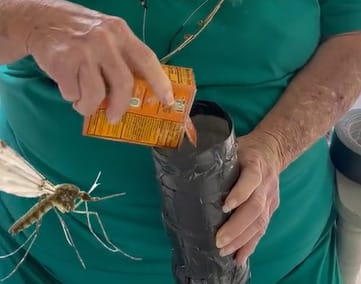
Step 3: Then pour in vinegar and see the magic happen. The reaction between these two ingredients generates carbon dioxide, which is irresistible to mosquitoes.
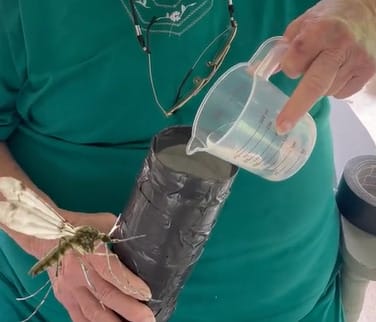
Be patient and give the trap about 20-24 hours to effectively lure in and deal with the mosquitoes. Place this trap in active mosquito areas — it is especially effective outdoors, where mosquitoes often gather, like patios and decks.
Remember to keep these traps safely away from children and pets, though.
Tips for Controlling Mosquitoes at Home
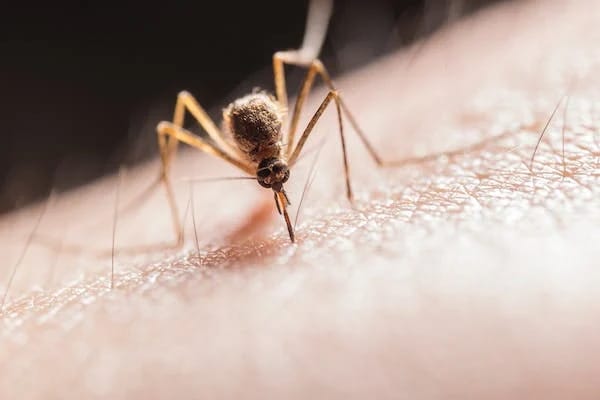
So, you’ve decided to wage war against those pesky mosquitoes. Don’t worry – I’ve got your back. We’ve already discussed a range of DIY traps. These traps work wonders utilizing common household items and tapping something as simple as carbon dioxide to lure and capture our winged invaders.
However, setting up traps isn’t the only way to fend off these bloodsuckers. A few tweaks to your yard can make your outdoor space less inviting for mosquitoes. You might consider:
- Attracting mosquito predators: Plantings that draw birds, dragonflies, and bats can greatly assist your fight against mosquitoes.
- Keeping your yard neat: A well-mowed lawn, free from undergrowth, can help reduce mosquito breeding grounds.
- Eliminating standing water: It’s mosquito heaven. Always check for standing water after a rainfall – buckets, wheelbarrows, the works. Install a fountain if you have a birdbath.
- Don’t ignore the background: Mosquitoes are drawn to black, so incorporating black items can help lure them to your traps.
- Power of garlic: Something as small as a clove around your sitting or working area can be an effective mosquito deterrent. A few pinches of garlic powder in your traps can also be a game-changer!
Remember, these efforts don’t have to cost the earth. Simple adjustments can help transform your home into a no-fly zone for mosquitoes. So, put on your war paint, roll up your sleeves, and let’s get those mosquitoes under control.
When to Call a Professional
The battle against mosquitoes can be an uphill task. Know when DIY measures aren’t enough, and it’s time to call in the pros. With persistent and ongoing mosquito issues, sometimes the best course of action is reaching out to experts.
- Persistent Buzzers: If you’ve tried all the tricks in the book and those pesky mosquitoes are still having a party at your place, it’s time to bring in the experts.
- Health Concerns: Remember, mosquitoes aren’t just annoying; they can be dangerous, carrying diseases. If you’re worried about the health risks, that’s a big red flag to get professional help.
- Water, Water Everywhere: Got stagnant water areas you can’t deal with? Professionals can handle that. They know how to stop mosquitoes from breeding in these problem spots.
- When Prevention Isn’t Enough: Sure, prevention is key, but if you’ve done all the yard cleaning and water draining, yet the problem persists, it’s time for a more robust solution.
- Safety First: When you have kids or pets, you want to ensure that any mosquito control method is safe. Professionals can provide solutions that are effective without compromising safety.
So there you have it. If you’re nodding along to any of these points, don’t hesitate to call in the cavalry. A mosquito-free home is not just comfortable; it’s crucial for your well-being.
Maintaining Your DIY Mosquito Traps: Keep ‘Em Buzzing Effectively
Let’s talk about keeping your DIY mosquito traps in top-notch condition. It’s not just about setting them up; it’s about ensuring they continue to do their job effectively. Here’s the rundown:
- Regular Ingredient Replacement: Just like refilling a bird feeder, your mosquito traps need a refresh, too. You’ll want to swap out the mixture every two weeks for the brown sugar and yeast trap. This keeps the CO2 output high and the mosquitoes interested.
- Check the Effectiveness: You’ll know it’s time to refresh your trap when you notice a decrease in mosquitoes caught. If your trap’s looking more like a ghost town than a mosquito motel, it’s time for a refresh.
- Cleaning is Key: Before adding new ingredients, clean your trap well. Rinse out any residue and dead mosquitoes to avoid mold and ensure the trap remains attractive to new visitors.
- The Soap and Light Trap: Change the water and soap mixture every few days for the soap and light trap. Stale water isn’t just less effective; it could become a breeding ground itself!
- Vinegar and Baking Soda Trap Maintenance: This one’s more reactive. Once the fizzing stops, the party’s over for the mosquitoes. Refresh with new baking soda and vinegar weekly to keep the trap active.
- Location, Location, Location: Sometimes, it’s not about the trap but where you place it. If a trap isn’t catching as many mosquitoes, try moving it to a different spot. Mosquitoes love dark, humid areas, so placing your trap there can improve effectiveness.
- Weather Watch: After heavy rain or extreme weather, check your traps. These conditions can dilute or wash away your trap’s contents, making a refresh necessary.
- Visibility Check: Ensure the light source remains clear and unobstructed for traps that use light. A dim or covered light won’t attract as many mosquitoes.
Following these maintenance tips will make your DIY mosquito traps more effective, keeping those buzzing intruders at bay. Remember, a little upkeep goes a long way in the battle against mosquitoes!
Frequently Asked Questions
- What Are the Signs That a Trap Is No Longer Effective?
- Keep an eye on the catch rate. If you notice a significant drop in the number of mosquitoes trapped, it’s probably time to replace the ingredients or clean the trap.
- Can I Use Different Types of Sugar or Yeast for the Sugar-Yeast Trap?
- Absolutely! While brown sugar is recommended for its effectiveness, you can experiment with other types of sugar. The same goes for yeast; any standard baking yeast should work fine.
- How Do I Know Where to Place My Mosquito Traps?
- Mosquitoes are attracted to dark, humid areas. Place your traps in shaded spots, near vegetation, or where you’ve noticed high mosquito activity.
- Will These Traps Also Attract Other Insects?
- While these traps are designed for mosquitoes, they might occasionally catch other insects attracted to moisture, light, or carbon dioxide.
- Can I Use These Traps Indoors?
- While these traps are primarily designed for outdoor use, you can use them indoors in well-ventilated areas. However, be mindful of the placement, especially with liquid traps.
- Do Weather Conditions Affect the Efficiency of the Traps?
- Yes, extreme weather conditions like heavy rain or intense heat can impact the effectiveness of your traps. Rain can dilute or wash away the ingredients, and high heat might cause the mixture to evaporate faster.
References
Organizations:
- American Mosquito Control Association (AMCA). https://www.mosquito.org/
- U.S. Environmental Protection Agency (EPA). https://www.epa.gov/
- Centers for Disease Control and Prevention (CDC). https://www.cdc.gov/index.htm
Website Resources:
- Entomology Today. https://entomologytoday.org/2021/12/08/integrated-mosquito-management-protects-people-animals/
Video References:
DIY Day & Night
Daisy Creek Farms with Jag Singh
dbmatthews35
therealnannyhacks
health tips
